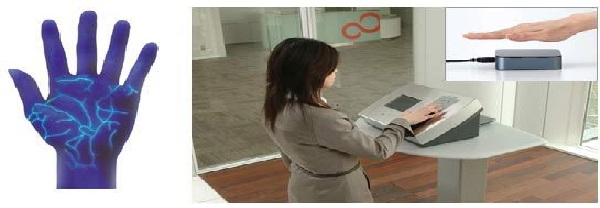

Palm Vein authentication works by comparing the pattern of veins in the palm (which appear as blue lines) of a person being authenticated with a pattern stored in a database. Vascular patterns are unique to each individual, according to research ” even identical twins have different patterns. And since the vascular patterns exist inside the body, they cannot be stolen by means of photography, voice recording or fingerprints, thereby making this method of biometric authentication more secure than others.
| Supply voltage (from USB power) | 4.4 to 5.4V (Input current: up to 500mA) |
| Power consumption | 2.5W or less |
| FAR (false accept rate) FRR (false reject rate) |
0.00008% 0.01% |
| Interface | USB 2.0 |
| Palm focal length (from sensor surface) |
2 inches from the surface of the sensor (+/- a half inch) |
| Reliability | MTBF (mean time between failure): 830,000 hours (94 years) Life of Unit: 5 years |
| Authentication response time | less than 1 second |
| Sensor surface material | Glass |
| Acoustic noise | None |
| Operating temperature | 0° to 60°C |
| Outer dimensions | 1.37(W) x 1.37(D) x 1.06(H) inches |
| Weight | 50g (approx.) |
| Supported OS | Client: Windows® 7, XP Pro, Vista, Redhat Linux Ver. 4 & 5 Server: Windows Server 2003 and 2008, Redhat Linux ver. 4 & 5 |